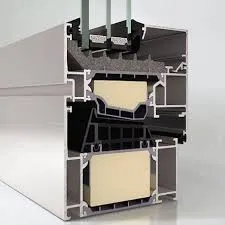Casting Iron Design Solutions for Innovative Applications
Design Considerations for Casting Iron
Casting iron has long been a favored material in various industries due to its excellent fluidity, wear resistance, and machinability. Its versatility makes it suitable for a wide range of applications, from automotive parts to household cookware. However, successful design using cast iron necessitates a comprehensive understanding of its properties, inherent challenges, and the nuances of the casting process.
Understanding the Material Properties
Cast iron is an alloy primarily composed of iron, carbon, and silicon. Its unique composition allows for distinct mechanical properties that vary with the type of cast iron. For instance, gray cast iron is known for its good machinability and vibration-damping qualities, making it ideal for engine blocks and machine bases. Ductile iron, on the other hand, exhibits greater strength and ductility, suitable for more demanding applications, such as pipes and structural components.
When designing for cast iron, it is crucial to consider factors such as thermal conductivity, tensile strength, and hardness. The material's high carbon content gives it a relatively low melting point, which facilitates casting intricate shapes. However, the brittleness of some cast iron types means that designers must avoid sharp corners and sudden changes in wall thickness, which can lead to stress concentrations and failure.
Design Process and Techniques
casting iron design

The design process for cast iron products typically begins with creating a detailed CAD model. This model should account for the specific properties of cast iron and considerations such as shrinkage and solidification patterns. A crucial element of the design is the incorporation of draft angles to ease the removal of the casting from molds, minimizing the risk of damage.
In addition, it is vital to understand the different casting techniques available, such as sand casting, investment casting, and die casting. Each method comes with its advantages and limitations concerning precision, surface finish, and overall cost. Sand casting is particularly popular for larger components due to its adaptability, while investment casting offers superior detail for smaller parts.
Addressing Challenges
Designers must also be aware of potential defects that can arise during the casting process, such as porosity, inclusions, and misruns. These defects can compromise the integrity of the final product. To mitigate these issues, appropriate gating systems should be designed to ensure smooth metal flow and proper filling of the mold. Additionally, rigorous testing and quality control measures must be implemented to inspect the cast components for dimensional accuracy and mechanical performance.
Conclusion
In conclusion, designing with cast iron offers numerous advantages, provided that the intrinsic characteristics of the material and the intricacies of the casting process are thoroughly understood. By considering aspects such as material properties, design techniques, and potential challenges, engineers and designers can create robust, efficient, and high-quality cast iron products that meet the demands of various applications. As industries continue to evolve, embracing the potential of cast iron will remain essential for achieving innovative and reliable design solutions.
-
Wrought Iron Components: Timeless Elegance and Structural StrengthNewsJul.28,2025
-
Window Hardware Essentials: Rollers, Handles, and Locking SolutionsNewsJul.28,2025
-
Small Agricultural Processing Machines: Corn Threshers, Cassava Chippers, Grain Peelers & Chaff CuttersNewsJul.28,2025
-
Sliding Rollers: Smooth, Silent, and Built to LastNewsJul.28,2025
-
Cast Iron Stoves: Timeless Heating with Modern EfficiencyNewsJul.28,2025
-
Cast Iron Pipe and Fitting: Durable, Fire-Resistant Solutions for Plumbing and DrainageNewsJul.28,2025
-
 Wrought Iron Components: Timeless Elegance and Structural StrengthJul-28-2025Wrought Iron Components: Timeless Elegance and Structural Strength
Wrought Iron Components: Timeless Elegance and Structural StrengthJul-28-2025Wrought Iron Components: Timeless Elegance and Structural Strength -
 Window Hardware Essentials: Rollers, Handles, and Locking SolutionsJul-28-2025Window Hardware Essentials: Rollers, Handles, and Locking Solutions
Window Hardware Essentials: Rollers, Handles, and Locking SolutionsJul-28-2025Window Hardware Essentials: Rollers, Handles, and Locking Solutions -
 Small Agricultural Processing Machines: Corn Threshers, Cassava Chippers, Grain Peelers & Chaff CuttersJul-28-2025Small Agricultural Processing Machines: Corn Threshers, Cassava Chippers, Grain Peelers & Chaff Cutters
Small Agricultural Processing Machines: Corn Threshers, Cassava Chippers, Grain Peelers & Chaff CuttersJul-28-2025Small Agricultural Processing Machines: Corn Threshers, Cassava Chippers, Grain Peelers & Chaff Cutters












